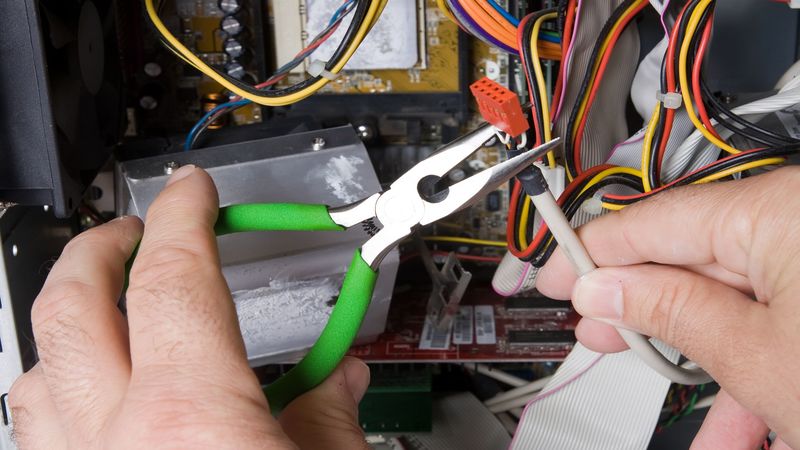Microwave integrated circuits are specialized circuits designed to operate at frequencies in the microwave range of above 1 Gigahertz up to 300 Gigahertz. These can be very complex types of circuits because of the high frequencies and the variance in the characteristics of components working at these frequencies.
The benefit of microwave technology is the ability to utilize short wavelength energy. This means that there is a decrease in the need for specific types of antennas and transmitters with high power needs. Instead, it is possible to use much lower power. This, in turn, impacts the types of circuits that are used in these types of devices.
In most applications, a microwave circuit will be very different in physical development from a mixed signal circuit or an analog or digital circuit. The systems in use in these circuits will use distributed circuit elements as well as transmission-line theory.
Distributed Circuit Elements
Sometimes known as the distributed element model, the microwave circuit relies on the inductance, capacitance and the resistance in the circuit to be evenly allocated across the circuit. It does not rely on individual components to be the inductor or the capacitor, which are typically part of the electrical components of a traditional type of circuit.
The benefit of this distributed model is that each component can be much smaller than in a traditional type of circuit. This allows these circuits to be used in devices that are much smaller than what would be required for s similar functioning mixed signal circuit.
Monolithic Microwave Integrated Circuit
The monolithic microwave integrated circuit or MMIC is often used to complete low-noise amplification, high-frequency switching and power amplification. These are incredible small circuits, with some being just 1mm2 in size.
These tiny circuits can be found in cell phones and other types of hand-held electronic devices. They are also the most common type of circuit used in GPS applications and devices and are ideal for these applications because of their low power needs.
Most of the new technologies around imaging systems in the medical field, medical devices and implants as well as robotic controls are now using this type of circuit. The use of MMIC will continue to grow in the future with the increased demand for even thinner and smaller electronics.
Monolithic microwave integrated circuits, as with all microwave circuits, are challenging to develop, but once designed and tested they are relatively low cost to manufacture, making them an ideal choice for large volume demands.

